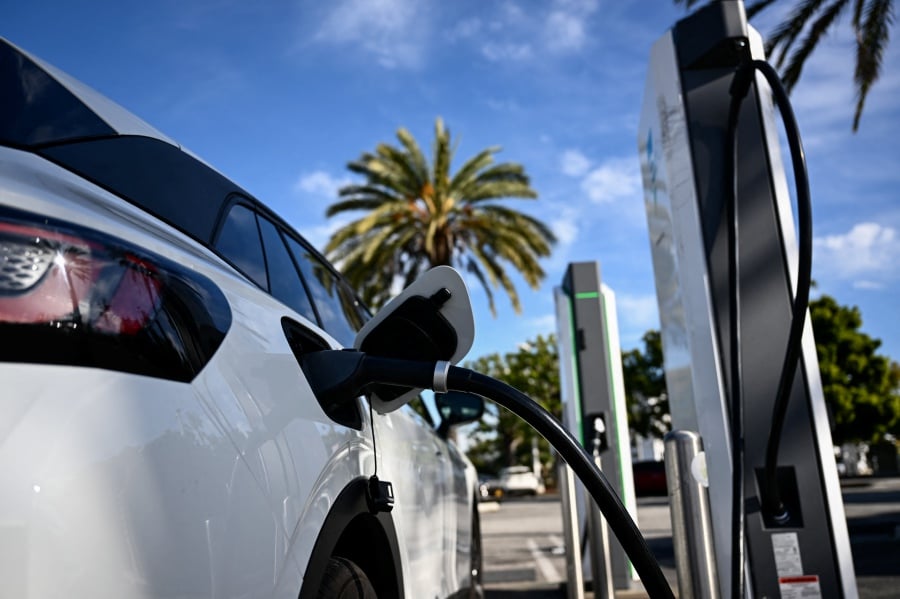
A Volkswagen ID.4 electric vehicle (EV) charges via a CCS DC fast charger. - AFP PIC
KUALA LUMPUR: The electric vehicle (EV) landscape in Malaysia is facing a classic chicken-and-egg dilemma, says former minister Yeo Bee Yin.
During her debate on the 2025 Budget, Yeo (PH-Puchong) said that despite the government’s repeated commitment to establish 10,000 charging stations by 2025, only 2,288 stations currently existed.
"Under the National Energy Transition Roadmap (NETR), the government aims for 15 per cent of new vehicle sales to be electric by 2030, increasing to 80 per cent by 2050.
“With less than three months until 2025, I ask: what is the current number of charging stations?” she said in the Dewan Rakyat today.
Yeo pointed out that the insufficient number of charging stations was deterring potential EV buyers.
“If there aren’t enough charging stations, people won’t purchase EVs,” she said.
She said that companies were also hesitant to invest in charging infrastructure, as their revenue depended on the number of electric vehicles using the stations.
“To resolve this chicken-and-egg situation, we must take action,” she added.
Yeo suggested classifying charging stations as national grid assets, allowing Tenaga Nasional Bhd to finance their construction through capital expenditure, supported by incentive-based regulations in the next regulatory period.
On another matter, she called for the government to include wetland measurements in its biennial update reports to the United Nations Framework Convention on Climate Change (UNFCCC).
“Wetlands are exceptional carbon sinks. However, I’ve noticed that changes in wetland land use aren’t included in the carbon sink measurements reported to the UNFCCC,” she said.
She also proposed government incentives for nature-based carbon credit projects, such as reforestation and mangrove restoration, which could be traded on the Bursa Carbon Exchange to generate additional funding for future carbon sink restoration initiatives.
2024-10-23T16:00:00Z
Source: New Straits Times